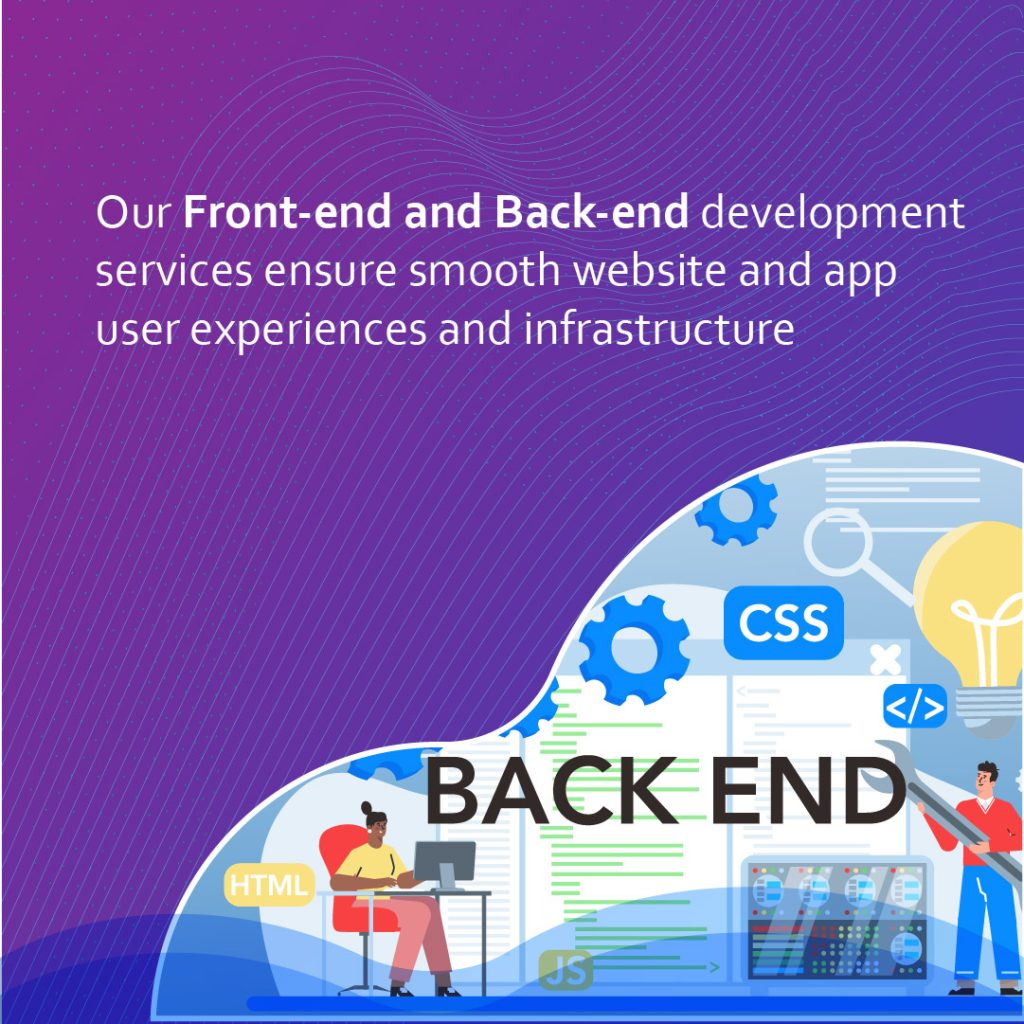
Introduction:
In the world of web development, two crucial areas come into play: front-end development and back-end development. These terms are often heard when discussing the creation and functionality of websites and web applications. Understanding the differences between front-end and back-end development is essential for aspiring developers and those interested in building an online presence.
This blog post will explore the distinctive front-end and back-end development aspects and highlight the associated skills and responsibilities.
Front-End Development:
Front-end development focuses on the part of a website or web application that users interact with directly. It involves creating the visual elements, user interface (UI), and user experience (UX). Front-end developers work with HTML, CSS, and JavaScript to bring designs to life and ensure the website or application is visually appealing, responsive, and functional.

Critical Aspects of Front-End Development:
-
- User Interface (UI) Design: Front-end developers collaborate with UI designers to implement the visual aspects of a website. They translate design mockups into code, ensuring consistency and responsiveness across different devices and screen sizes.
-
- HTML Structure: HTML (Hypertext Markup Language) forms the backbone of a web page. Front-end developers use HTML to structure content, define headings, paragraphs, and lists, and incorporate media elements like images and videos.
-
- Cascading Style Sheets (CSS): CSS controls the visual representation of the website. Front-end developers use CSS to control typography, colors, layout, animations, and other visual aspects, ensuring a cohesive design that aligns with the intended aesthetic.
-
- Client-Side Scripting: JavaScript is a critical component of front-end development, enabling dynamic and interactive elements on a website. Front-end developers use JavaScript to implement form validation, dropdown menus, sliders, and other user interactions.
-
- Back-End Development: Back-end development works server side of web development, focusing on behind-the-scenes functionality and data management. It involves writing server-side code that handles requests from the front end, interacts with databases, and manages business logic.
Critical Aspects of Back-End Development:
- Server-Side Programming: Back-end developers work with programming languages such as Python, Ruby, PHP, or JavaScript (with frameworks like Node.js) to create the server-side logic of a website or web application. They handle tasks like processing user input, database operations, and server-side validation.
- Database Management: Back-end developers design and manage databases that store and retrieve information. They work with database management systems (DBMS) like MySQL, PostgreSQL, or MongoDB to structure data, create queries, and ensure efficient data management.
- API Development: APIs (Application Programming Interfaces) allow different systems to communicate. Back-end developers design and implement APIs to enable data exchange and integration with other services or platforms, facilitating functionalities like user authentication or data retrieval. Application programming interfaces are essential to back-end development integration. Application programming interfaces allow various connections to get established with each other
- Security and Performance: Back-end developers implement security measures to protect user data, preventing unauthorized access or malicious attacks. They also optimize the performance of the server-side code, ensuring efficient data processing and fast response times.

Conclusion:
Front-end and back-end development are distinct but interconnected web development disciplines. Front-end developers use HTML, CSS, and JavaScript to create visual and interactive elements that users directly engage with. Back-end developers focus on the server-side logic, database management, and integration of various systems, ensuring data security and efficient performance.
While front-end development leans toward UI/UX design and user interaction, back-end development handles server-side programming, data management, and system integration. A complete understanding of both front-end and back-end development is crucial for building.
Ready to take the leap? Don’t miss out on the opportunity to unlock the full potential of your business. AETSM SOFT team of experts will guide you through the ever-evolving landscape of technology, equipping you with the tools and knowledge needed to stay ahead of the competition.
